A Sound Source Identification Algorithm Based on Bayesian Compressive Sensing and Equivalent Source Method
Abstract
1. Introduction
2. Theoretical Background
2.1. Equivalent Source Model
2.2. Tikhonov Regularization and Wideband Acoustical Holography
3. Reconstruction Algorithm
3.1. Compressive Sensing Model for Sound Field Reconstruction
3.2. Reconstruction via Bayesian Method
- Initialize , , .
- Select a basis vector out of and update the basis vector,if and , is in the model, re-estimate ,if and , add to the model with updated ,if , prune from the model and set .
- Update parameters , , , , .
- The iteration terminates when the value of marginal likelihood changes less than the set threshold or when the maximum number of iterations is exceeded. Otherwise go to step 3.
- Set , then estimate the vector by Equation (8).
3.3. High Dynamic Range for -v
4. Numerical Simulations
4.1. Simulation for Single Sound Source
4.2. Simulation for Coherent Sound Sources
5. Experimental Validation
6. Conclusions
Author Contributions
Funding
Acknowledgments
Conflicts of Interest
References
- Maynard, J.D.; Williams, E.G.; Lee, Y. Nearfield acoustic holography: I. Theory of generalized holography and the development of NAH. J. Acoust. Soc. Am. 1985, 78, 1395–1413. [Google Scholar] [CrossRef]
- Bai, M.R. Application of BEM (boundary element method)-based acoustic holography to radiation analysis of sound sources with arbitrarily shaped geometries. J. Acoust. Soc. Am. 1992, 92, 533–549. [Google Scholar] [CrossRef]
- Kim, B.; Ih, J. On the reconstruction of the vibro-acoustic field over the surface enclosing an interior space using the boundary element method. J. Acoust. Soc. Am. 1996, 100, 3003–3016. [Google Scholar] [CrossRef]
- Jacobsen, F.; Jaud, V. Statistically optimized near field acoustic holography using an array of pressure- velocity probes. J. Acoust. Soc. Am. 2007, 121, 1550–1558. [Google Scholar] [CrossRef] [PubMed]
- Hald, J. Basic theory and properties of statistically optimized near-field acoustical holography. J. Acoust. Soc. Am. 2009, 125, 2105–2120. [Google Scholar] [CrossRef]
- Xiao, Y.; Chen, J.; Hu, D.; Jiang, F. Equivalent source method for identification of panel acoustic contribution in irregular enclosed sound field. Chin. J. Acoust. 2015, 39, 49–66. [Google Scholar]
- Advanced equivalent source methodologies for near-field acoustic holography. J. Sound. Vib. 2019, 438, 66–82. [CrossRef]
- Hald, J. Wideband acoustical holography. In Proceedings of the Inter-Noise 2014, Melbourne, Australia, 16–19 November 2014. [Google Scholar]
- Hald, J. Fast wideband acoustical holography. J. Acoust. Soc. Am. 2016, 139, 1508–1517. [Google Scholar] [CrossRef]
- Estellers, V.; Soatto, S.; Bresson, X. Adaptive Regularization With the Structure Tensor. IEEE Trans. Image Process. 2015, 24, 1777–1790. [Google Scholar] [CrossRef]
- Eslahi, N.; Aghagolzadeh, A. Compressive Sensing Image Restoration Using Adaptive Curvelet Thresholding and Nonlocal Sparse Regularization. IEEE Trans. Image Process. 2016, 25, 3126–3140. [Google Scholar] [CrossRef]
- Donoho, D.L. Compressed sensing. IEEE Trans. Inf. Theory 2006, 52, 1289–1306. [Google Scholar] [CrossRef]
- Ji, S.; Xue, Y.; Carin, L. Bayesian compressive sensing. IEEE Trans. Signal Process. 2008, 56, 2346–2356. [Google Scholar] [CrossRef]
- Babacan, S.D.; Molina, R.; Katsaggelos, A.K. Bayesian Compressive Sensing Using Laplace Priors. IEEE Trans. Image Process. 2010, 19, 53–63. [Google Scholar] [CrossRef] [PubMed]
- Chardon, G.; Daudet, L.; Peillot, A.; Ollivier, F.; Bertin, N.; Gribonval, R. Near-field acoustic holography using sparse regularization and compressive sampling principles. J. Acoust. Soc. Am. 2012, 132, 1521–1534. [Google Scholar] [CrossRef] [PubMed]
- Chu, N.; Mohammad-Djafari, A.; Picheral, J. Robust Bayesian super-resolution approach via sparsity enforcing a priori for near-field aeroacoustic source imaging. J. Sound. Vib. 2013, 332, 4369–4389. [Google Scholar] [CrossRef]
- Antoni, J. A Bayesian approach to sound source reconstruction: Optimal basis, regularization, and focusing. J. Acoust. Soc. Am. 2012, 131, 2873–2890. [Google Scholar] [CrossRef]
- Pereira, A.; Antoni, J.; Leclere, Q. Empirical Bayesian regularization of the inverse acoustic problem. Appl. Acoust. 2015, 97, 11–29. [Google Scholar] [CrossRef]
- Fernandez-Grande, E.; Xenaki, A. Compressive sensing with a spherical microphone array. J. Acoust. Soc. Am. 2016, 139, EL45–EL49. [Google Scholar] [CrossRef]
- He, Y.; Liu, C.; Xu, Z.; Zhang, Z.; Li, S. Application of Inverse Patch Transfer Functions Method With Wideband Holography Algorithm to Sparsely Distributed Sources Identification. J. Vib. Acoust. 2017, 140, 011008. [Google Scholar] [CrossRef]
- Xu, Z.; Wang, Q.; He, Y.; Zhang, Z.; Li, S.; Li, M. A monotonic two-step iterative shrinkage/thresholding algorithm for sound source identification based on equivalent source method. Appl. Acoust. 2018, 129, 386–396. [Google Scholar]
- Dougherty, R.P. Functional Beamforming. In Proceedings of the 5th Berlin Beamforming Conference, Berlin, Germany, 19–20 February 2014. [Google Scholar]
- Dougherty, R.P. Functional Beamforming for Aeroacoustic Source Distributions. In Proceedings of the 20th AIAA/CEAS Aeroacoustics Conference, Atlanta, GA, USA, 16–20 June 2014. [Google Scholar]
- Xu, Z.; Tian, K.; He, Y.; Zhang, Z.; Li, S. Denoising Weighting Beamforming Method Applied to Sound Source Localization With Airflow Using Microphone Array. J. Vib. Acoust. 2018, 140, 061015. [Google Scholar] [CrossRef]
- Brüel&Kjær. PULSE Beamforming System with 18-channel Sector Wheel Array. Available online: https://www.bksv.com/-/media/literature/Product-Data/bn1467.ashx (accessed on 4 February 2020).
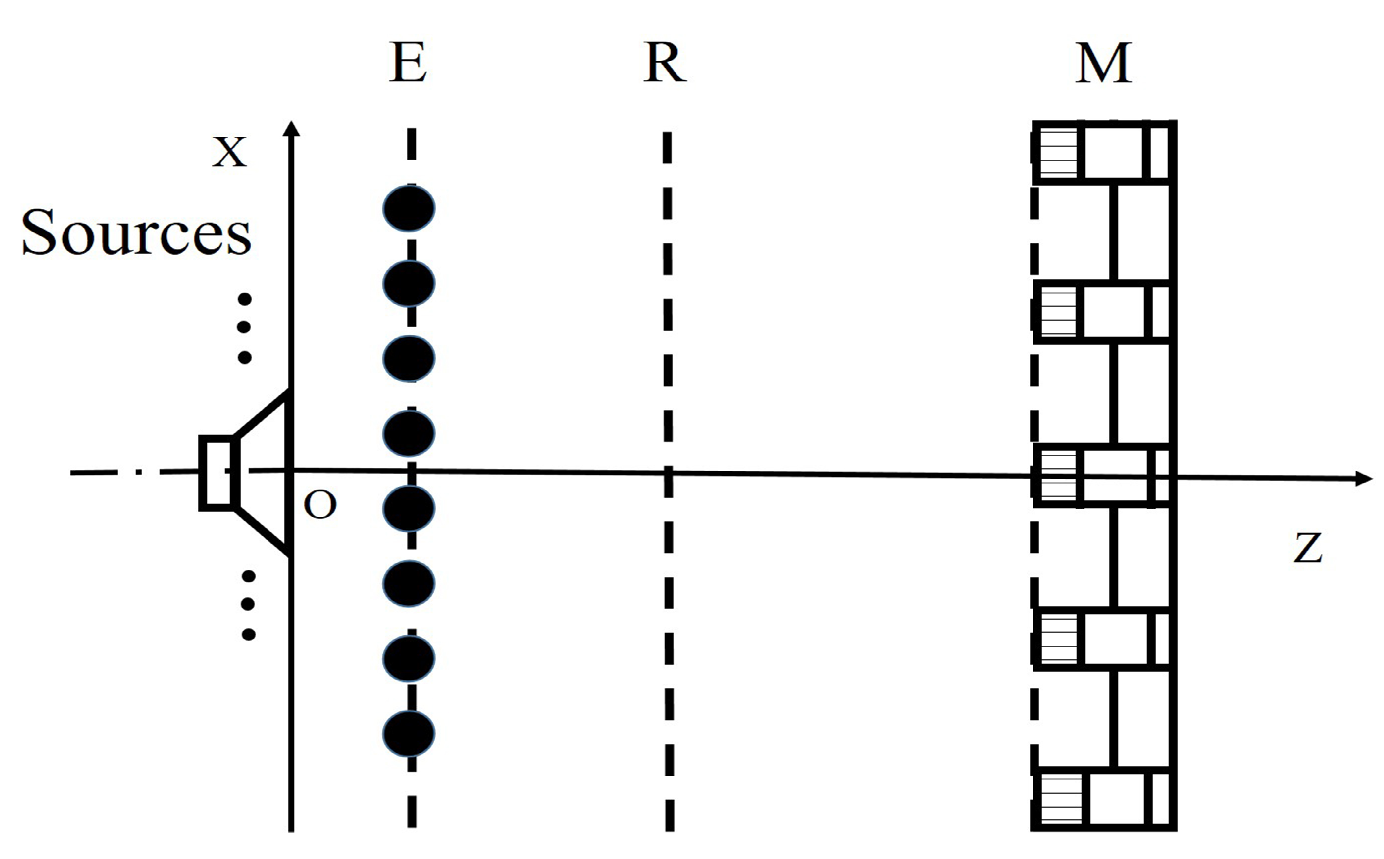
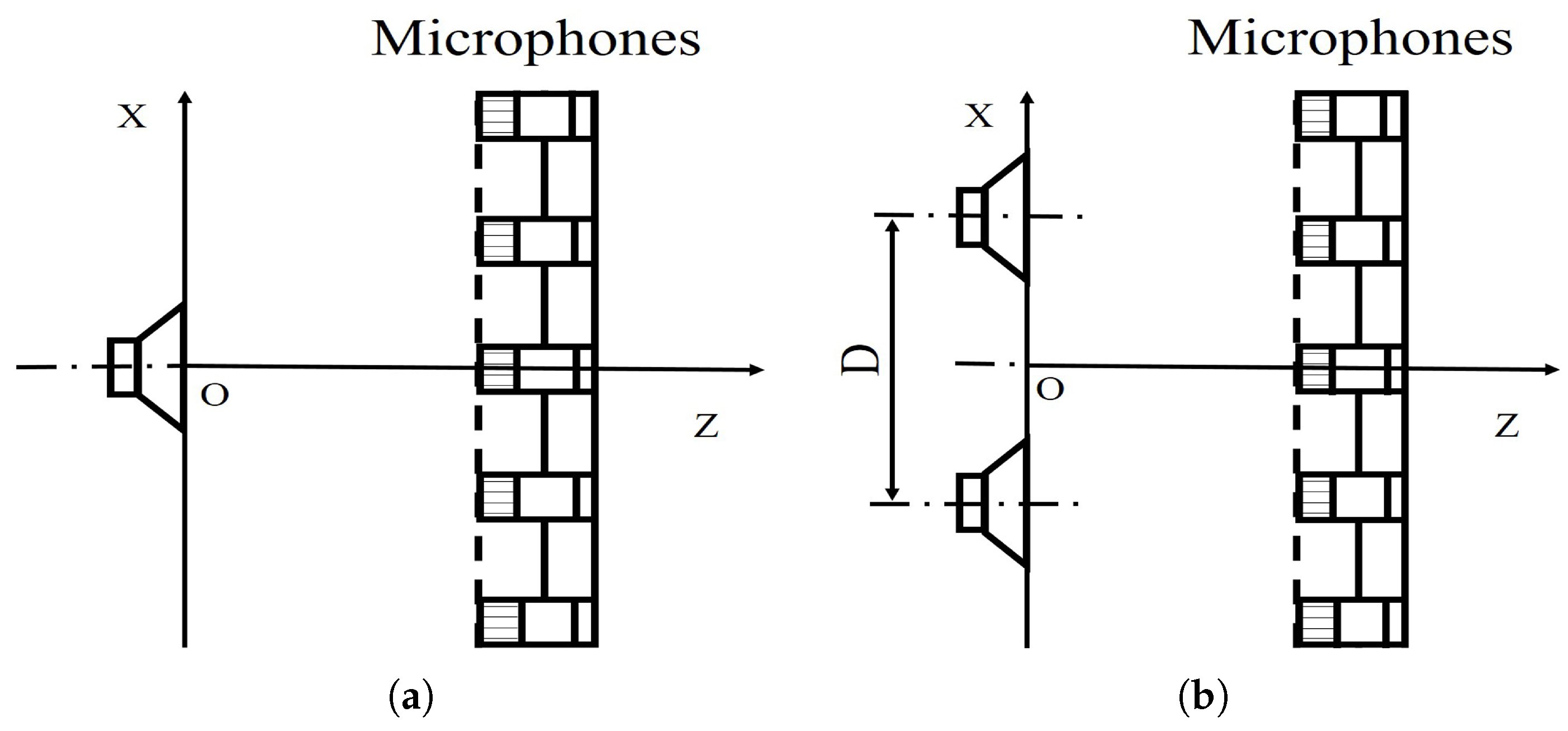
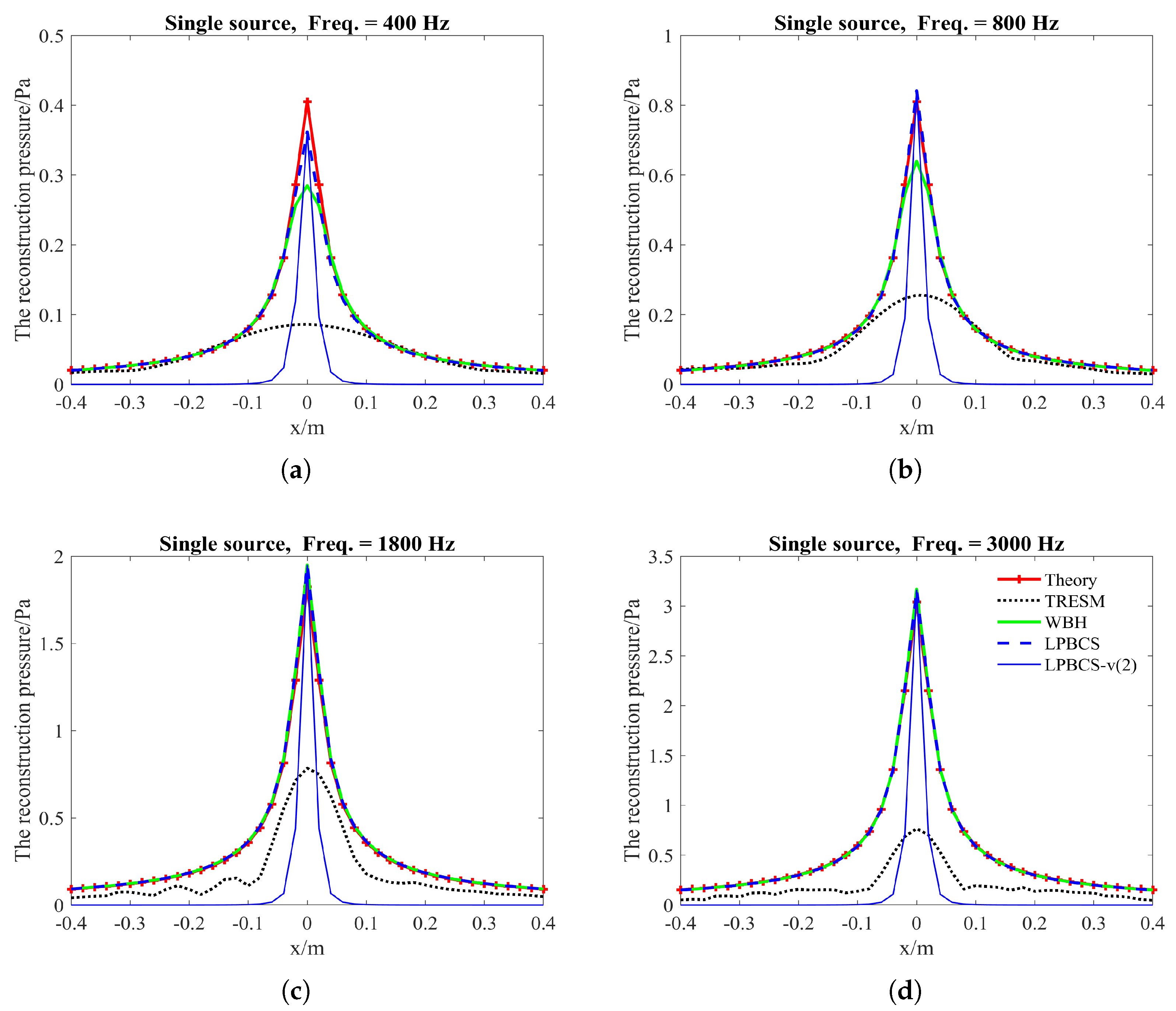


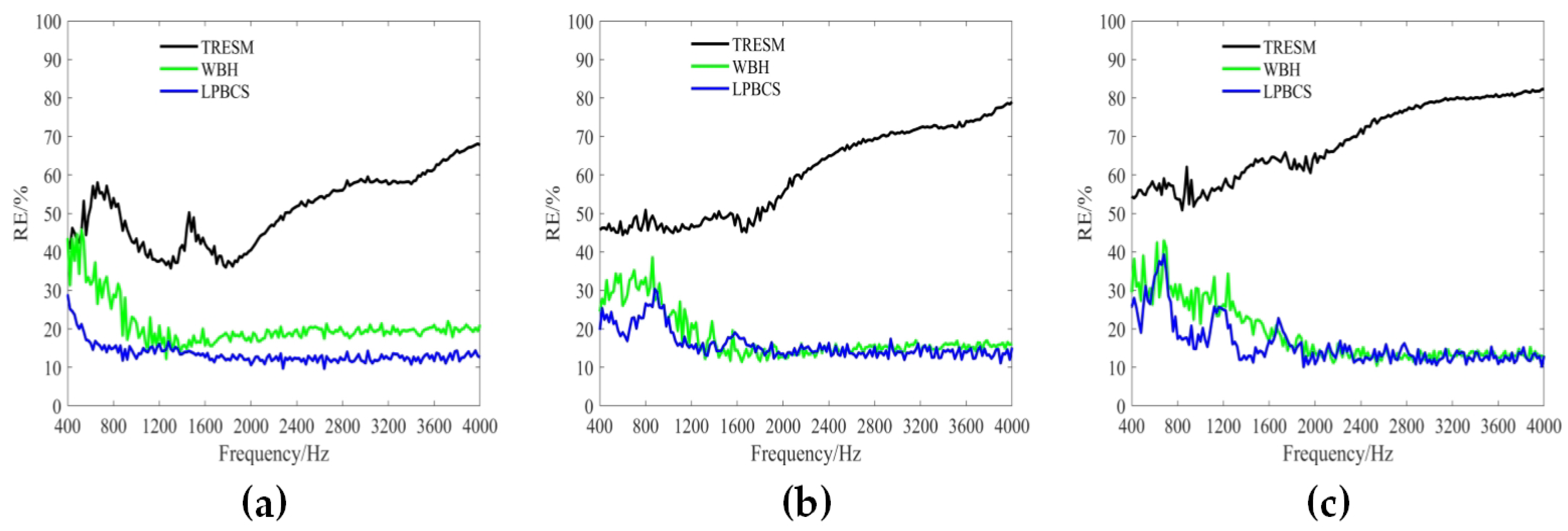
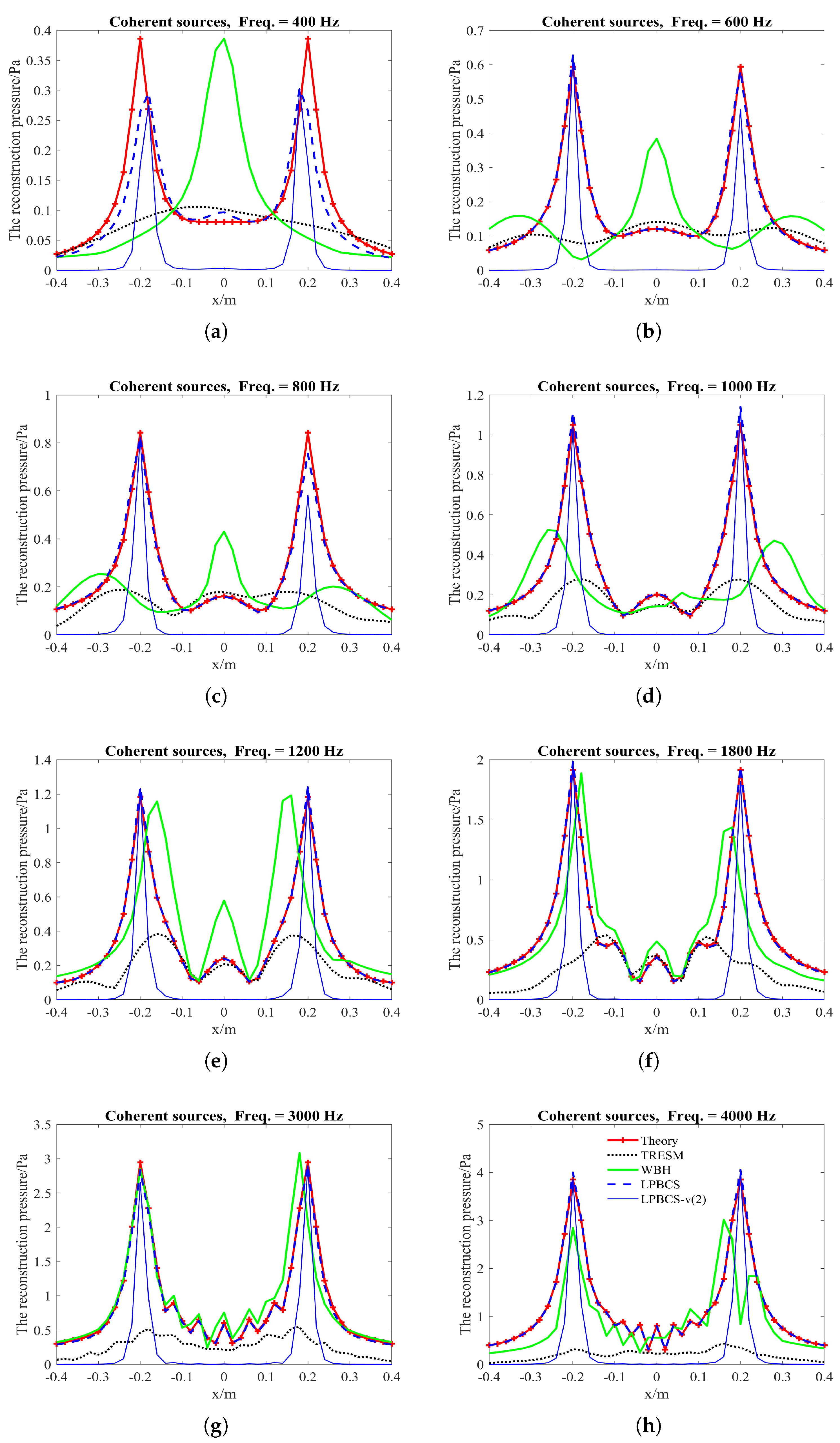
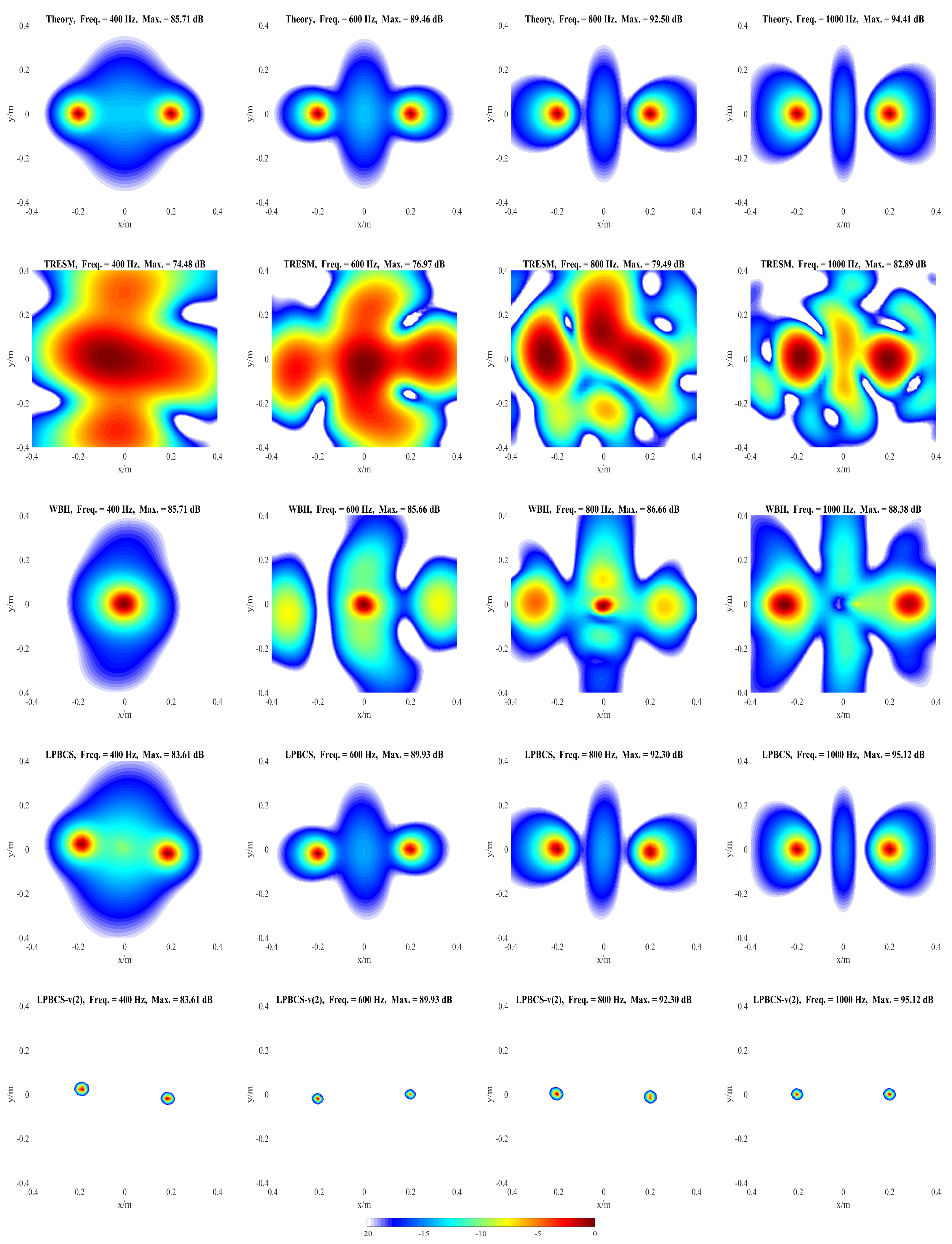
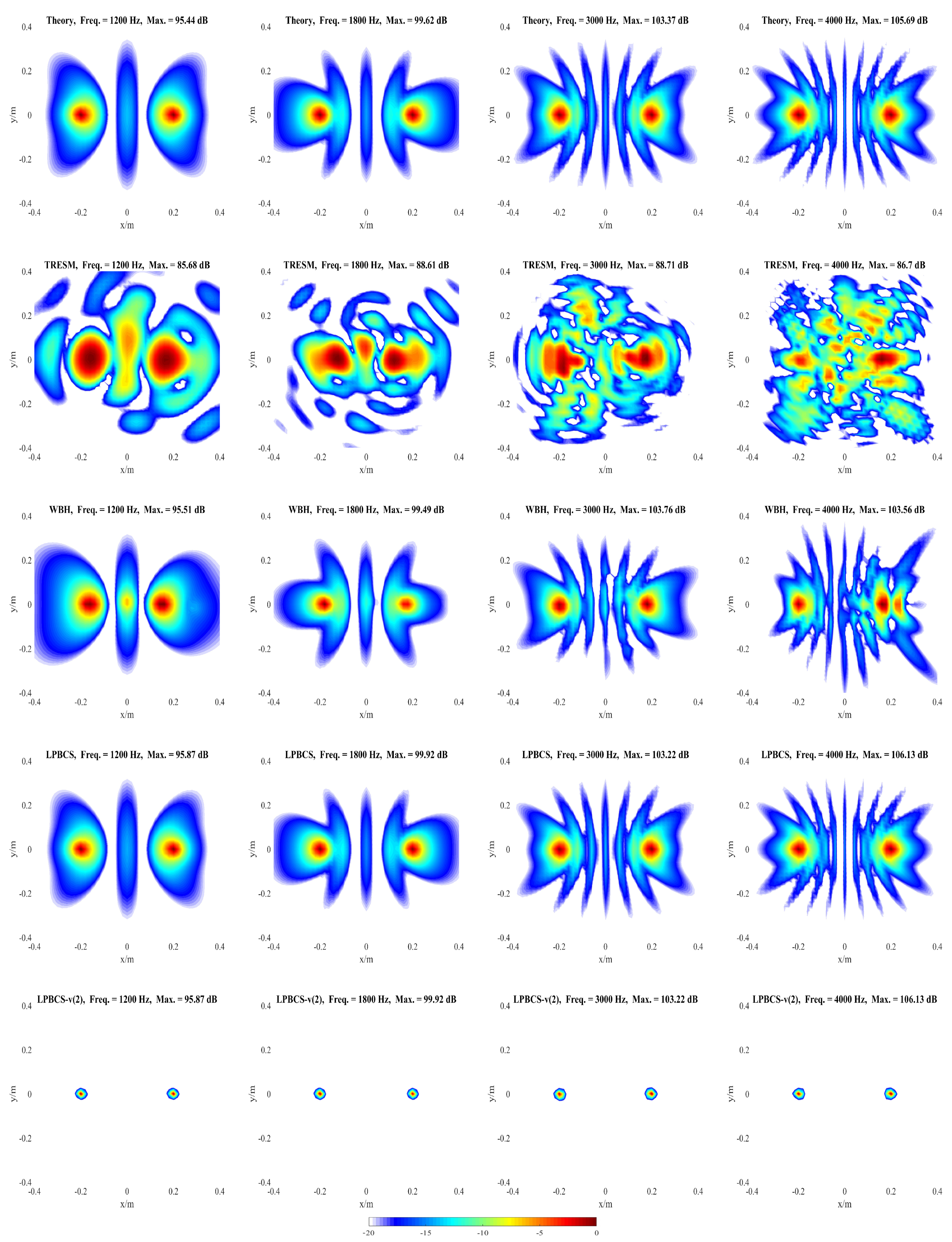
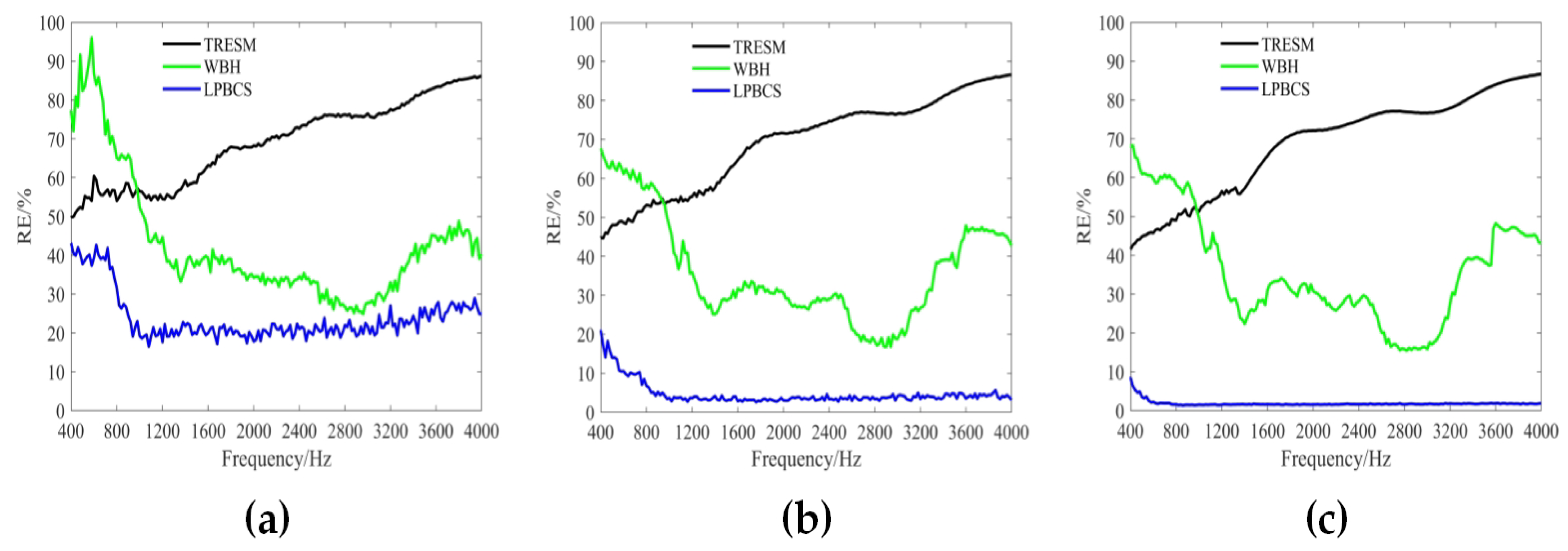
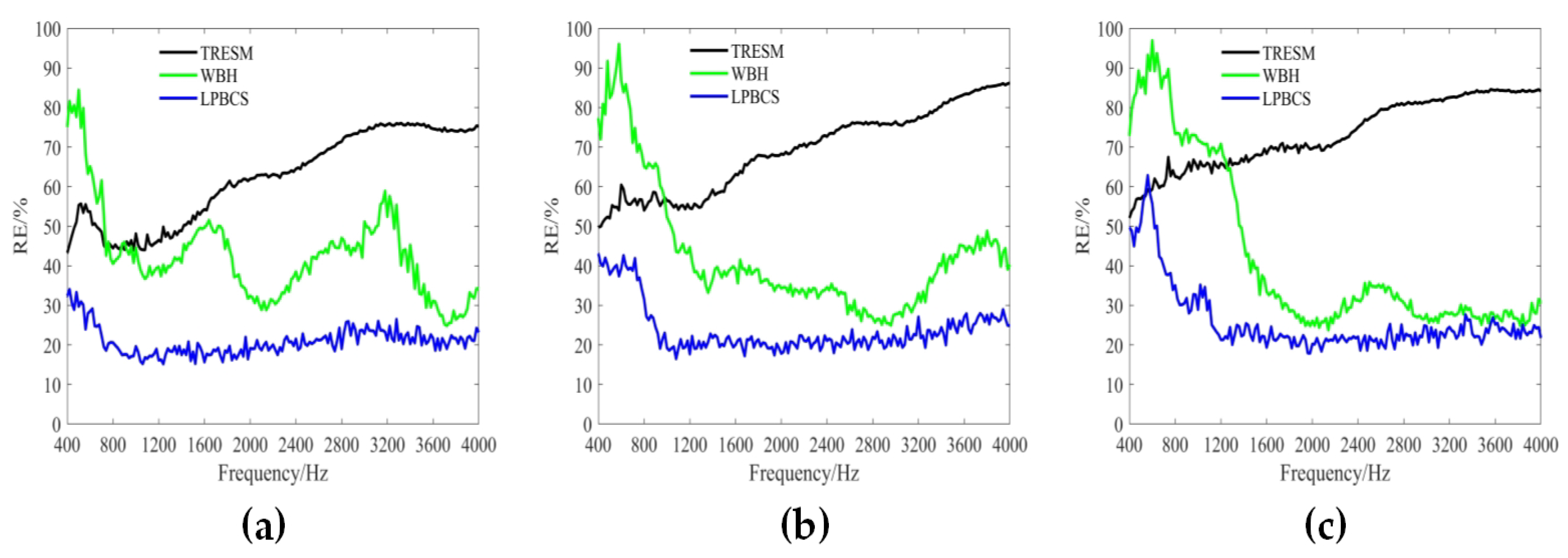

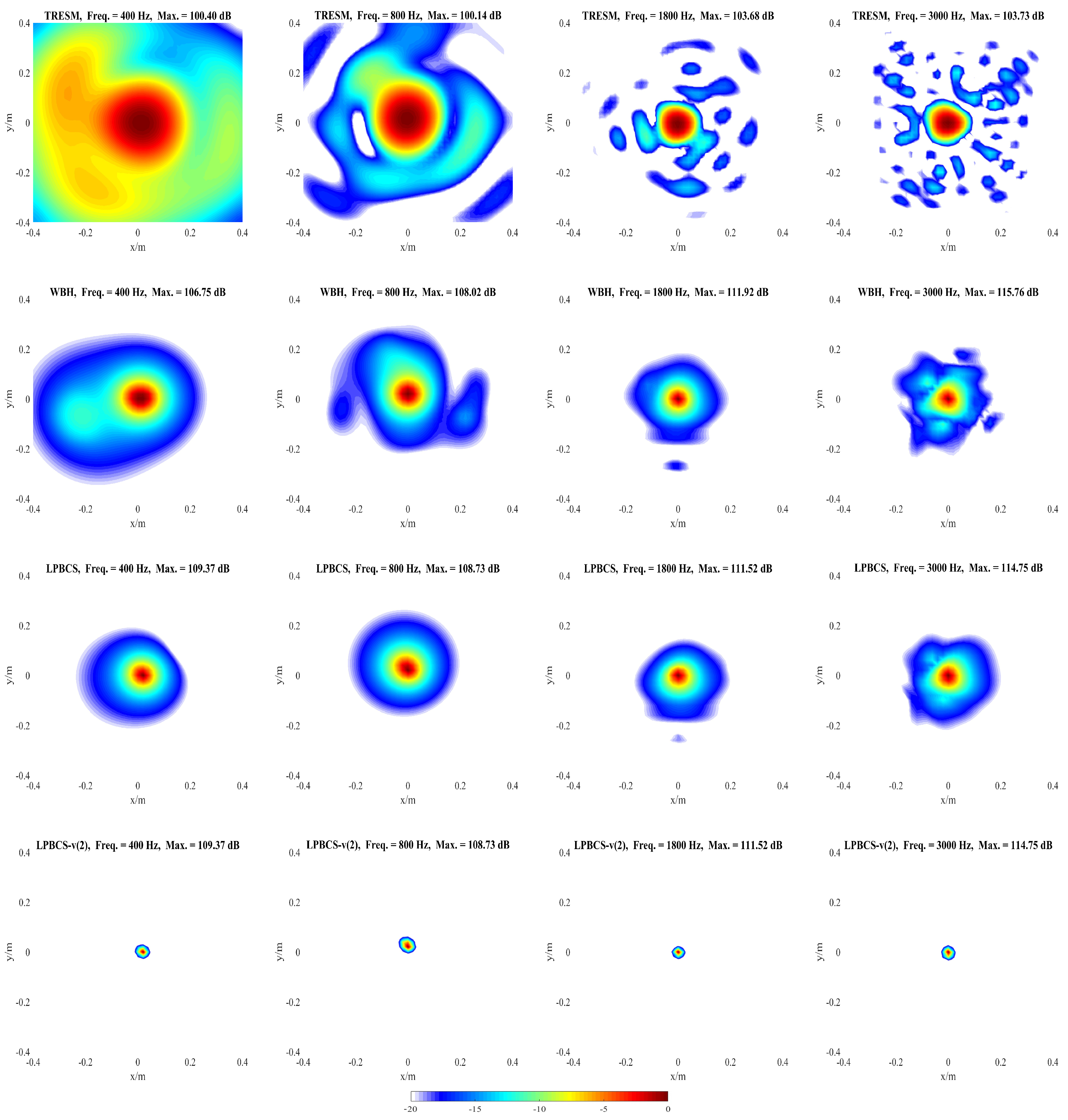

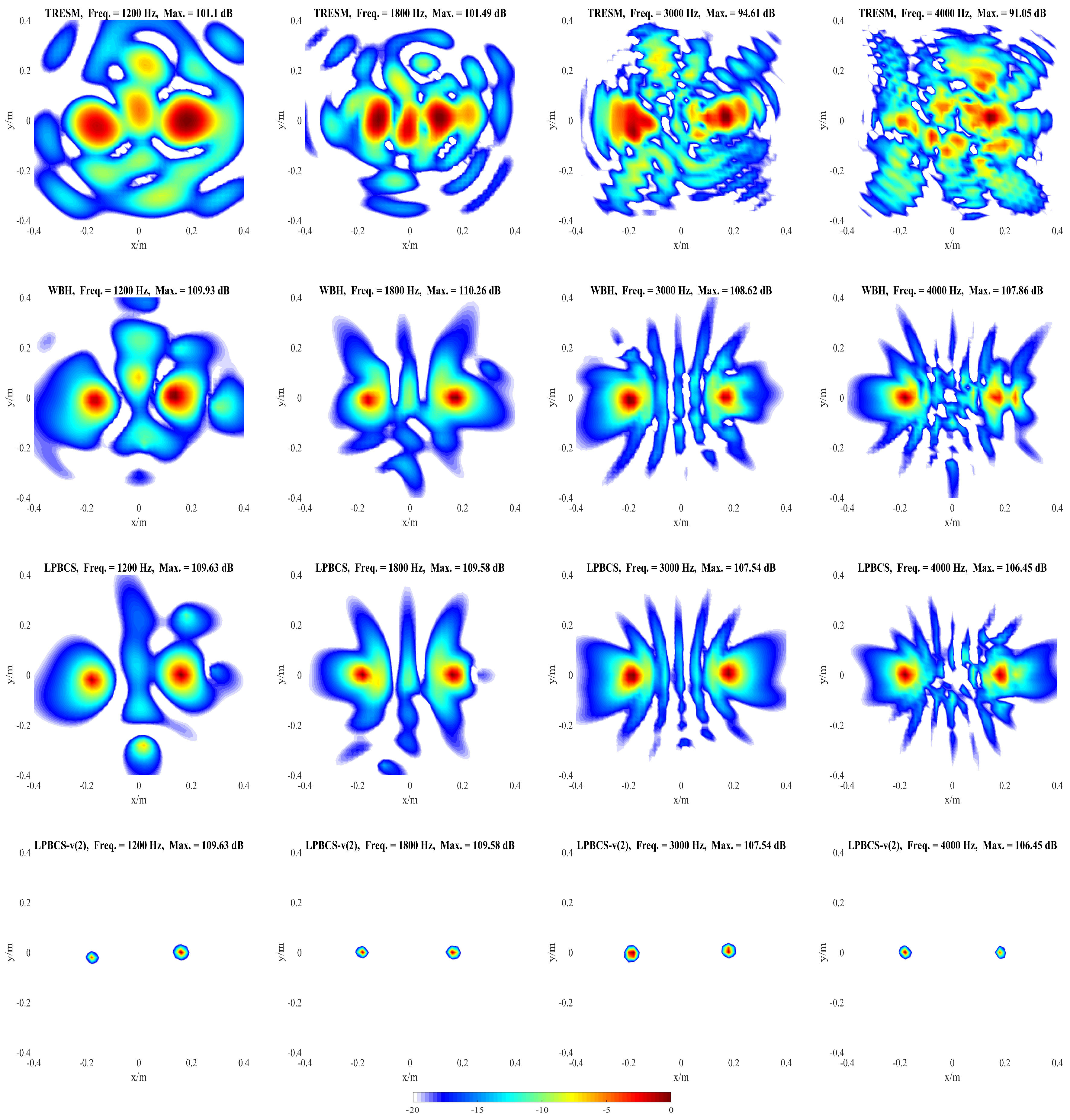
© 2020 by the authors. Licensee MDPI, Basel, Switzerland. This article is an open access article distributed under the terms and conditions of the Creative Commons Attribution (CC BY) license (http://creativecommons.org/licenses/by/4.0/).
Share and Cite
Zan, M.; Xu, Z.; Huang, L.; Zhang, Z. A Sound Source Identification Algorithm Based on Bayesian Compressive Sensing and Equivalent Source Method. Sensors 2020, 20, 865. https://doi.org/10.3390/s20030865
Zan M, Xu Z, Huang L, Zhang Z. A Sound Source Identification Algorithm Based on Bayesian Compressive Sensing and Equivalent Source Method. Sensors. 2020; 20(3):865. https://doi.org/10.3390/s20030865
Chicago/Turabian StyleZan, Ming, Zhongming Xu, Linsen Huang, and Zhifei Zhang. 2020. "A Sound Source Identification Algorithm Based on Bayesian Compressive Sensing and Equivalent Source Method" Sensors 20, no. 3: 865. https://doi.org/10.3390/s20030865
APA StyleZan, M., Xu, Z., Huang, L., & Zhang, Z. (2020). A Sound Source Identification Algorithm Based on Bayesian Compressive Sensing and Equivalent Source Method. Sensors, 20(3), 865. https://doi.org/10.3390/s20030865





